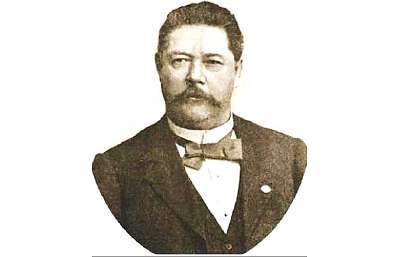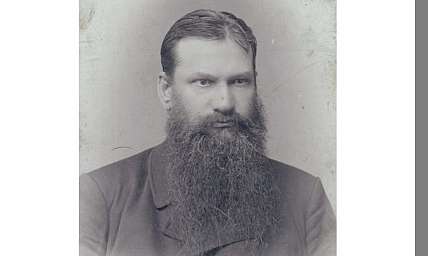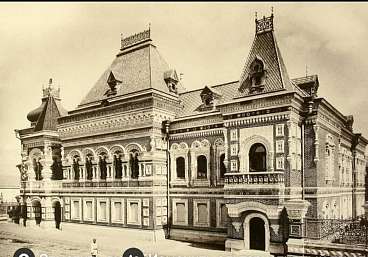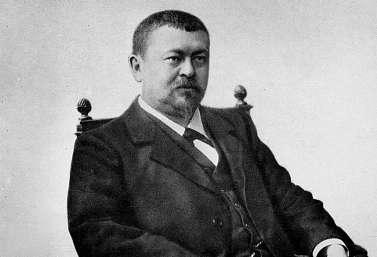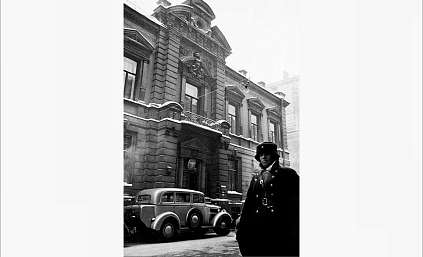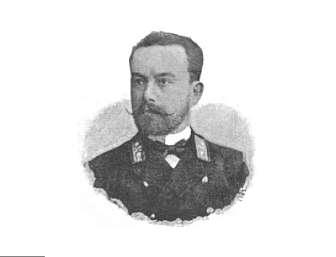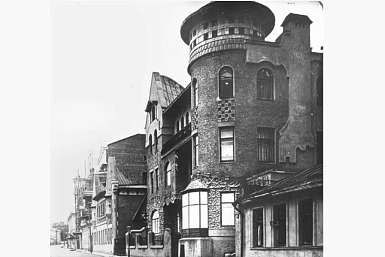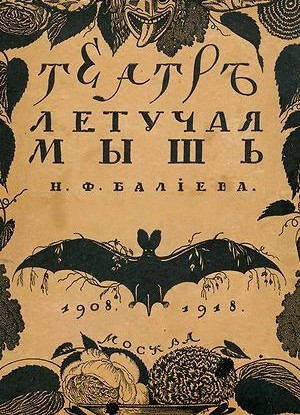
In accordance with the plan of the owner of the building in Kursovy Lane (house 1), railway engineer Petr Nikolaevich Pertsov, the new house with residential apartments and workshops was intended to accommodate artists attracted by its uniqueness. Artists, such as Robert Falk, Aleksandr Kuprin, Nathan Altman, Pavel Sokolov-Skalya, willingly settled there, in the “Russian terem”. In the basement of the building there was the Bat chamber theater, in which artists of the Moscow Art Theater performed parodies and comic shows. By the way, there is a story behind the theater’s name! On February 29, 1908, actor Nikita Baliev and the Moscow Art Theater director Nikolay Tarasov went down to the basement of the house because they needed a room for their new theatrical enterprise. At that moment, a bat flew out of it and later became the emblem of the theater. It might even seem as if it was in contrast to other symbol – the seagull of the Moscow Art Theater.
The mysterious heroine of the Pure Monday story moved into the same building, which soon became famous, thanks to Ivan Bunin. The work’s lyrical hero wrote about it: “Every evening my coachman sped me at this hour on a stretching trotter – from the Red Gate to the Cathedral of Christ the Savior: she lived opposite to it. In the house opposite to the Cathedral of the Savior, she rented a corner apartment on the fifth floor for the sake of a view of Moscow, only two rooms, but spacious and well furnished.”
Here what his youngest daughter Zinaida Pertsova wrote in her memoirs: “...there was a person living in our house, a famous freak and original - Pozdnyakov. He arranged his apartment of four enormous rooms in an extraordinary way. The largest, almost a hall, was turned into a bathroom (my brothers visited Pozdnyakov’s house, and they described its arrangement to me in detail). The floor and the walls were draped with black broadcloth. In the middle of the room, on a custom-built platform, there was a huge black marble bathtub (weighing 2,500 pounds). The room was lit by orange lights. Huge wall mirrors reflected whoever was sitting in the bathtub from all sides.
Another room was transformed into a winter garden: the wood-block floor was covered with sand and laid with green plants and lawn furniture. The living room was lovely — with tiger fur and artistic furniture made of Karelian birch. In this room, the owner welcomed his visitors wearing an ancient Greek toga and barefoot sandals. It is worth noting that there was a diamond monogram shining on the nail of his big toe. He was served by a black man in red livery, always accompanied by a black pug with a big red bow!
At first, this apartment was greatly admired by Leo Trotsky: Only I have no idea if he also started wearing a Greek toga and sandals!”
The pertsovs had lived in this house until 1922. The new tenant was no other than Leo Trotsky. At first, he chose the former apartment of Pozdnyakov, but then he moved into Pertsov’s dwelling proper.
